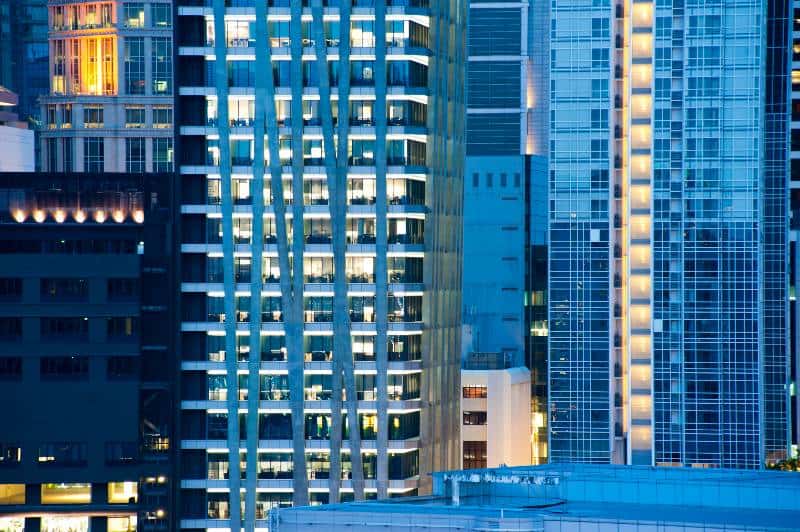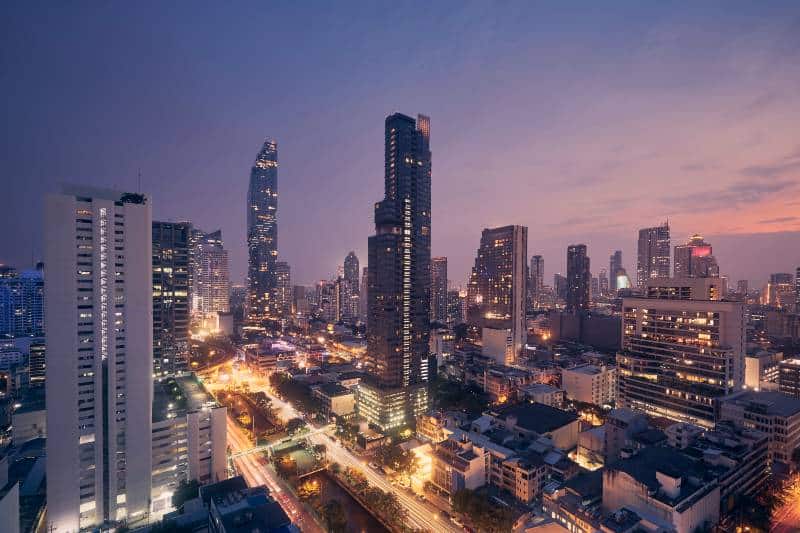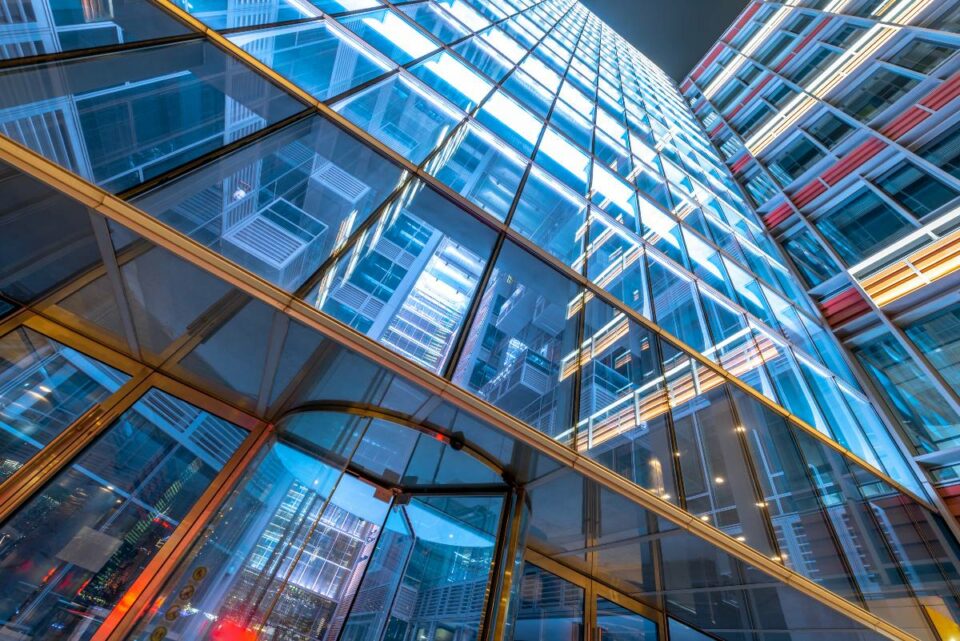Urbanization, the process of creating cities or expanding existing ones, has become a major source of economic growth in the 21st century. The influx of new residents through urban development creates many financial opportunities for businesses, but it can also alter local property values and cause major changes to the commercial real estate market.
In this blog post, we will explore how urbanization affects commercial property values, including an examination of strategies used by both public and private developers to manage these effects. We will also discuss the impact of zoning laws on land prices and offer our insights into how buyers and sellers should confront issues related to urban development.
With all that said let’s jump right into it!
Urbanization influences annual rental values, pushing demand for commercial spaces in expanding cities. As populations grow, offices, retail, and mixed-use developments see renewed and rental values surge. Enhanced physical urban infrastructure further elevates property values and property taxes. While overvaluation risks persist, investors targeting emerging urban centers with sustainable properties can maximize returns, especially when considering location and evolving trends.
Key Takeaways
- As cities grow and populations concentrate, there’s an increased demand for commercial spaces, directly influencing property values.
- Beyond direct demand, shifts in consumer behavior, the rise of mixed-use developments, and environmental considerations play crucial roles in determining commercial property values in urban areas.
- Understanding the nuances of urbanization can help investors identify both risks and opportunities in the commercial property market.
Table of Contents

Historical Context
Let’s embark on a journey back in time, shall we?
As we rewind the clock to a few decades ago, cities were not the bustling hubs of activity they are today. Picture a time when town or city areas skylines were less crowded, streets less congested, and the idea of a ‘mega-city’ was still in its infancy. The charm of urban life was just beginning to take root, and with it came the initial stirrings of change in the world of commercial real estate.
In the 1970s and 1980s, urbanization was primarily driven by industrialization. Factories and industries mushroomed in and around cities, drawing people in search of better job opportunities.
This influx meant a growing need for commercial spaces – not just factories, but also offices for the burgeoning administrative tasks. The value of commercial properties in these urban hubs began to see a steady uptick. It was a time of promise, and investors took note, recognizing the potential goldmine that urban commercial properties could be.
Fast forward to the 1990s and early 2000s, and the narrative took an interesting twist. The digital revolution was in full swing. Cities were no longer just industrial hubs; they were transforming into technological and informational powerhouses. The demand for office spaces skyrocketed, especially with the rise of tech giants and startups. Commercial properties in prime locations, close to amenities and transport links, became hot commodities. Prices soared, and city centers became the beating hearts of economic activity.
But it wasn’t just about offices. As urban populations swelled, there was a ripple effect. More people meant a greater need for shopping centers, entertainment venues, and dining establishments.
Mixed-use developments, which combined retail, office, and sometimes residential spaces, started gaining traction. These became the epitome of urban convenience, further driving up the value of commercial properties that could offer multiple functionalities.
Now, as we approach the present day, we see a landscape where urbanization is influenced by factors like sustainability, connectivity, and quality of life. The pandemic of 2020 reshaped how we view workspaces, with remote working trends causing many to rethink the traditional office setup. Yet, commercial properties have remained resilient, adapting to new roles, be it co-working spaces or hybrid office models.
The dance between urbanization and commercial property values over the past few decades has been a dynamic one, filled with twists and turns. It’s a testament to the adaptability of cities and the commercial real estate sector. And as history has shown us, as cities evolve, so too does the value and role of the commercial spaces within them. So, whether you’re an investor, a history buff, or someone simply curious about the world around you, there’s no denying that this evolution has been nothing short of fascinating!
Factors Driving Urbanization
Population Growth in Cities
- As cities expand and develop, they naturally attract more residents due to better healthcare facilities, more diverse educational opportunities, and a plethora of amenities. Over time, as more people move to cities and establish families, it leads to a natural increase in the urban population. Take cities like Mumbai or Lagos, for instance. Originally modest in size, they’ve grown exponentially over the decades.
- As people flocked to these cities for better opportunities and established roots, subsequent generations further contributed to the city’s growth. This growth often leads to increased demand for housing, infrastructure, and services, further driving the development and expansion of urban areas.
Technological Advancements
- Technology has been a game-changer in the way we live and work. As technological innovations emerge, they often find their first applications and maximum utilization in urban settings, making cities hubs of technological progress and attracting those keen on leveraging these advancements. Silicon Valley in California serves as a prime example.
- As a nucleus of technological innovation, it drew in tech enthusiasts, entrepreneurs, and professionals from all over the world. The allure of being at the forefront of tech developments made it a magnet for talent and ambition. As a result, cities become centers of innovation, leading to further advancements and drawing even more people.
Economic Shifts and Job Opportunities
- Economic dynamics play a pivotal role in urbanization. As industries evolve and new sectors emerge, they often gravitate towards urban areas where there’s a concentration of resources, infrastructure, and talent. This creates a plethora of job opportunities, attracting individuals from rural or less developed areas in search of better livelihoods.
- For instance, the rise of the financial sector in cities like New York or London has made them global economic powerhouses. People from various parts of the world move to these cities, not just for job opportunities but for the promise of growth and a better quality of life. This influx then spurs further urban development, creating a cycle of growth and attraction.
These concepts are crucial to comprehend, but I highly recommend delving even deeper to broaden your understanding. In fact, I recently crafted a comprehensive article elucidating the intricate ways in which climate change impacts commercial property. It delves into the multifaceted aspects of this issue, exploring its implications on various sectors and offering insightful analysis of potential strategies for adaptation and mitigation.
Direct Impacts of Urbanization on Commercial Property Values
Increased Demand for Commercial Spaces:
- As urban areas swell with populations, there’s a corresponding surge in the need for commercial spaces. This isn’t just about businesses wanting to set up shop; it’s about catering to the diverse needs of an urban populace. From restaurants and cafes to gyms and entertainment centers, the urban dweller’s lifestyle necessitates a variety of commercial establishments.
- This heightened demand invariably leads to a rise in the value of commercial properties. In cities that have seen rapid urbanization, prime commercial real estate spots often fetch premium prices, reflecting the intense competition for such spaces.
Changes in Property Types and Their Values:
- Urbanization brings with it a shift in the types of commercial properties that are in demand. Let’s break this down:
- Office Spaces: As cities become hubs for businesses, especially in sectors like technology, finance, and services, the demand for office spaces increases. However, the nature of these spaces is also evolving. For instance, with the rise of startups and freelancers, there’s a growing preference for co-working spaces.
- Retail: Urban populations, with their increasing purchasing power and evolving tastes, drive the demand for diverse retail experiences. High-end malls, boutique stores, and experiential retail spaces become more sought after.
- Warehouses: With the boom in e-commerce and the need for faster delivery services to cater to the urban consumer, there’s a growing demand for strategically located warehouses within or close to city limits. This has led to the appreciation of values of such properties, which were earlier often relegated to the city’s outskirts and valued less.
- Each of these shifts in property types comes with its own set of value dynamics, influenced heavily by the pace and nature of urbanization in a particular area.
Infrastructure Developments and Their Influence on Property Values:
- Infrastructure is the backbone of any urban area, and its development often goes hand in hand with urbanization. The introduction or upgrade of roads, public transport systems, utilities, and other amenities can significantly boost the value of commercial properties in the vicinity. For instance, the development of a new metro line or a major highway can make a region more accessible, leading to increased footfall and business potential.
- Commercial properties in such areas often see a spike in their value. Conversely, areas that lag in infrastructure development might not see as much appreciation in property values, even if other factors are favorable. It’s a clear testament to the adage in real estate: “Location, location, location!” But in the context of urbanization, it’s not just about being in the city; it’s about being in the right part of the city.
Indirect Impacts of Urbanization
Urbanization, while directly influencing the demand and value of commercial properties, also has a series of indirect effects that shape the landscape of real estate. These ripple effects, often subtle yet profound, are driven by deeper societal shifts and evolving priorities.
Shifts in Consumer Behavior and Preferences
- As urban populations grow and diversify, so do their tastes, preferences, and behaviors. The cosmopolitan nature of cities exposes residents to global trends, leading to a more informed and discerning consumer base. This has implications for the kind of commercial spaces that thrive.
- For instance, with the rise of e-commerce, there’s been a noticeable shift towards experiential retail. Consumers, while they might shop online, still value brick-and-mortar stores that offer unique experiences, be it through in-store events, interactive product displays, or themed establishments. This has led to a reimagining of retail spaces, influencing their design, location, and consequently, their value.
- Similarly, the urban populace’s increasing emphasis on work-life balance has led to a preference for commercial spaces that incorporate wellness elements, be it green spaces, fitness centers, or relaxation zones.
The Rise of Mixed-Use Developments
- Mixed-use developments, which combine residential, commercial, and sometimes recreational spaces, have become the hallmark of modern urban planning. They cater to the urban dweller’s desire for convenience, reducing the need for long commutes and offering amenities right at their doorstep.
- From a commercial property perspective, these developments often command higher values. Retail spaces or offices within such developments benefit from the captive audience residing within the same complex. This integrated approach to urban living and commerce ensures consistent footfall and engagement, making these commercial spaces highly sought after.
Environmental Concerns and Sustainable Building Practices
- The global conversation around sustainability and environmental responsibility has found a loud echo in urban centers. Cities, often bearing the brunt of environmental challenges like pollution or heat islands, have become crucibles for sustainable innovations.
- This has a direct bearing on commercial real estate. Properties that incorporate sustainable building practices, use green materials, or have energy-efficient systems often command a premium in the market. Consumers and businesses alike are willing to pay more for spaces that align with their environmental values.
- Furthermore, with many cities introducing regulations and incentives for green building practices, commercial properties that don’t adapt might find themselves depreciating in value or facing higher operational costs.
In essence, while urbanization’s direct impacts on commercial property values are evident and tangible, its indirect effects, shaped by societal shifts and evolving priorities, are equally influential. They paint a picture of a dynamic, ever-evolving real estate landscape that mirrors the complexities and aspirations of the urban populace.
Challenges and Opportunities for Investors
The urbanization wave, while bringing a plethora of opportunities for investors in the commercial property domain, also ushers in its own set of challenges. Navigating this landscape requires a blend of caution, foresight, and strategic thinking. Let’s delve into the intricacies of these challenges and opportunities.
Challenges
- Potential Risks Associated with Overvaluation
- One of the most significant challenges investors face in rapidly urbanizing areas is the risk of overvaluation. As demand for commercial properties in urban centers surges, there’s a tendency for prices to inflate, sometimes beyond the property’s intrinsic value.
- Investors, especially those driven by short-term gains, might find themselves purchasing properties at peak prices, only to face challenges in achieving desired returns, especially if the market corrects or saturates. Overvaluation risks can lead to reduced profitability and, in worst-case scenarios, significant losses.
Opportunities
- Opportunities in Emerging Urban Centers
- While established cities offer the allure of stability and proven growth, emerging urban centers present a goldmine of opportunities for discerning investors. These are cities or regions on the cusp of significant urban growth, often driven by factors like new industries, infrastructure projects, or governmental initiatives.
- Investing in such areas allows investors to enter the market at relatively lower prices, with the potential for substantial appreciation as the region undergoes urban transformation. It’s akin to catching a rising star – the returns can be exponential if timed right.
The Importance of Location and Foresight in Investment Decisions
The urban landscape, with its ever-shifting dynamics, offers a mix of challenges and opportunities for commercial property investors. Success in this domain is often a blend of strategic location choices, timely investments in emerging centers, and a deep understanding of both current and upcoming trends. It’s a game of chess, where foresight, patience, and strategy can lead to checkmate!
Case Studies
1. Shanghai, China
- Background: Shanghai, once a modest-sized port city, has transformed into one of the world’s major financial hubs in just a few decades. This rapid urbanization was driven by China’s economic reforms and its open-door policy.
- Impact on Commercial Property: The demand for office space, especially in the iconic Pudong district, skyrocketed. High-rise buildings, luxury hotels, and shopping centers began to dominate the skyline. Commercial property values soared, with prime locations fetching premium prices.
- Lessons Learned: Infrastructure development plays a crucial role in driving commercial property values. The development of the Shanghai Metro system, for instance, made certain areas more accessible, further boosting their commercial value. Additionally, governmental policies and international collaborations can significantly influence urban growth and, by extension, property values.
2. Dubai, UAE
- Background: In the late 20th century, Dubai embarked on a journey to diversify its economy from oil to tourism, real estate, and finance. This vision led to a massive influx of investments and expatriates.
- Impact on Commercial Property: The city saw the rise of iconic commercial properties like the Burj Khalifa and the Dubai Mall. As international businesses set up regional offices in Dubai, the demand for commercial spaces in areas like the Dubai International Financial Centre (DIFC) surged.
- Lessons Learned: Visionary leadership can reshape a city’s destiny. Dubai’s transformation teaches investors the importance of long-term vision and the role of diversification in urban development. It also highlights the risks of over-reliance on real estate as a primary economic driver, as seen during the 2008-2009 Dubai financial crisis.
3. Austin, Texas, USA
- Background: Known for its vibrant music scene and cultural festivals, Austin has also emerged as a tech hub, earning the nickname “Silicon Hills”. The city has attracted tech giants and startups alike.
- Impact on Commercial Property: As tech companies established headquarters and offices, the demand for commercial spaces in Austin grew. This led to increased property values, especially in areas close to the city’s tech corridors.
- Lessons Learned: Diversified growth is sustainable. While tech drove the demand for commercial spaces, Austin’s cultural scene, educational institutions, and quality of life ensured a steady influx of talent, further driving urbanization. For investors, it underscores the importance of holistic city development in influencing commercial property values.
These case studies highlight the multifaceted nature of urbanization and its impact on commercial property values. While each city’s journey is unique, common threads emerge: the role of infrastructure, visionary leadership, diversified growth, and adaptability in the face of challenges. For investors, these stories offer valuable insights into the dynamics of urban growth and the opportunities and risks it presents.
Future Predictions
The trajectory of urbanization, while rooted in historical and current trends, is also influenced by emerging global dynamics. As we gaze into the crystal ball of the future, several predictions emerge about how urbanization might evolve and what it means for commercial property investors.
Decentralized Urbanization
- Trend: Instead of a few mega-cities absorbing the majority of the urban populace, we might see a rise in secondary or tier-2 cities gaining prominence. Factors like remote work, digital connectivity, and improved transportation might reduce the dependency on mega-cities.
- Implication: Investors might find lucrative opportunities in these emerging urban centers. Commercial properties in these cities could offer better value for money and higher growth potential compared to saturated mega-cities.
Sustainable Urban Growth
- Trend: With increasing awareness of environmental challenges, future urbanization will likely prioritize sustainability. This means green buildings, efficient waste management, and urban green spaces might become standard features of urban development.
- Implication: Commercial properties that adhere to sustainable practices will be more in demand. Investors should prioritize eco-friendly buildings, both from an ethical standpoint and for better long-term returns.
Technological Integration
- Trend: Smart cities, where technology integrates seamlessly with infrastructure, will become more prevalent. IoT, AI, and other technological advancements will play a pivotal role in urban planning and management.
- Implication: Commercial properties equipped with the latest tech amenities – from smart security systems to energy-efficient solutions – will command higher values. Investors should be tech-forward in their property choices.
Diverse Commercial Spaces
- Trend: The lines between different commercial spaces will blur. For instance, retail spaces might integrate more experiential and entertainment elements, while office spaces might prioritize wellness and recreation.
- Implication: Properties that offer multifunctional spaces or can be easily adapted to changing needs will be more valuable. Investors should seek versatility in their commercial property investments.
Resilience Planning
- Trend: Given the increasing occurrences of global challenges, from pandemics to climate-related crises, cities will prioritize resilience in their urban planning.
- Implication: Commercial properties that are designed with resilience in mind – be it in terms of health safety, disaster management, or adaptability – will be more sought after. Investors should factor in resilience as a key criterion in their investment decisions.
Strategies for Smart Commercial Real Estate Investing
Researching Property Values and Growth Potential
Before investing, research business property values by addressing potential investment areas. Analyze market sales data, rental rates, and area growth projections to pinpoint promising locations. Drive targeted neighborhoods to directly assess infrastructure, transportation access, and area vibrancy when evaluating commercial development opportunities.
Investing in Commercial Property Development
Explore hands-on commercial real estate investing by partnering with experienced developers on new property constructions or existing building renovations. Start small by financing just a portion of a project to learn the process before directly undertaking ground-up development ventures. Focus on early developments near growing residential zones to ensure solid tenant demand.
Mastering Commercial Property Investment Fundamentals
Gaining commercial real estate investing knowledge lays the foundation for success. Learn property types, ownership structures, expense categories, risk management strategies, and other basics. Attend courses, network with experienced investors, and construct financial models to build expertise in assessing real-deal opportunities that match your investing goals.

Urbanization on Commercial Property Values FAQs
What affects the valuation of commercial property?
The value of commercial property is highly dependent on its location and the surrounding infrastructure. Factors like access to transport networks, proximity to commercial districts and amenities, the existence of quality housing, schools, or healthcare facilities can all significantly influence property values.
What can negatively affect the value of a commercial property?
The value of a commercial property is influenced by the surrounding environment. Thus, factors like crime rates, air pollution levels, or an influx of lower-priced housing can negatively impact its value. In addition, policy changes related to zoning regulations or taxation can also adversely affect property values in the long run.
How can I increase the value of my commercial building?
The best way to increase the value of a commercial building is to ensure it remains relevant and meets changing market needs. This could involve investments in refurbishing, energy efficiency, or technology upgrades. Additionally, investors can also take advantage of emerging trends by strategically locating their properties in centers that are expected to drive economic growth.
What are the benefits of urbanization?
Urbanization brings a range of economic, environmental, and social benefits. It can spur job growth, drive innovation and technological development, promote the efficient use of resources, reduce poverty levels, and improve access to education and healthcare.
How many commercial real estate properties are there in the US?
The United States currently boasts a staggering 5.96 million commercial properties, a notable increase from the 5.76 million recorded in 2012. This growth is characterized by a 3 percent rise in the number of office buildings, reaching a total of 4.1 million, and a 5 percent surge in the number of warehouses, which now stands at 2.3 million. Such figures highlight the ongoing expansion and diversification within the commercial real estate landscape across the nation.
Conclusion
The days of wishing for big city amenities but small town property values are in the past. With urbanization on the rise, commercial properties are becoming increasingly sought after in cities, directly influencing their value. To protect your investments and ensure a solid return on your real estate property, it is imperative to understand the nuances that come with living and investing in an urban environment. Whether it is ensuring regulatory compliance or tracking shifts in consumer behavior, those who prepare accordingly will be much better off than those trying to play catch-up further down the road.
Now more than ever before is a very good time to invest in commercial properties, especially when armed with the right tools and knowledge. If you’re seeking guidance on navigating this unique market, don’t hesitate to call or schedule a free consultation with me – I’m here to help!




